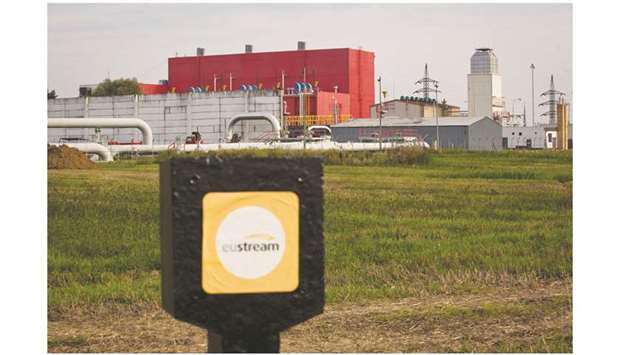Russian natural gas flows to Europe via the crucial transit point at Velke in Slovakia dropped to near zero as demand remained muted and a new transit deal potentially curbed shipments.
Flows via Ukraine fell last Wednesday after the two former Soviet allies late on Monday agreed on a last-minute deal to keep sending the fuel to Gazprom PJSC’s main markets in the west for the next five years. They have slid even further on the route via Velke as the chart below shows.
Velke Kapusany, an entry point for gas from Ukraine, has the most important compressor station in the European Union, according to operator Eustream AS’s website. It can handle as much as 195mn cubic metres a day, or about 80% of the UK’s daily demand.
Shipments of Russian gas via Belarus, another transit route, also declined.
European benchmark prices jumped at their fastest pace since October on Friday after fluctuating near their lowest for this time of year in at least a decade. The region is yet to have a proper cold snap this winter.
The decline in flows may also be related to the new contracts agreed between Ukraine and Russia, according to Katja Yafimava, a senior research fellow at the Oxford Institute for Energy Studies.
Under last year’s arrangement, Gazprom may have been encouraged to send at least 110bn cubic metres a year or pay for transit of that fuel anyway, she said. This year, the “ship or pay” level drops to 65bn cubic meters, she said.
That means it is probably better for Gazprom to “optimise sales without transiting as much across Ukraine” as in 2019, she said.
Separately, Gazprom said last week that overall sales to the European Union, Turkey and China fell 1.3% in 2019.

An Eustream sign stands on land surrounding the SK-UA reverse flow compressor station for the Vojany Uzhorod gas pipeline, operated by Slovak pipeline operator Eustream in Velke Kapusany, Slovakia (file). The decline in flows may also be related to the new contracts agreed between Ukraine and Russia, according to Katja Yafimava, a senior research fellow at the Oxford Institute for Energy Studies.


